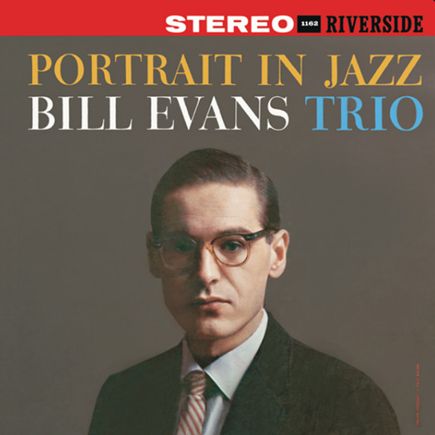Come Rain or Come Shine: entre passion inaltérable et lyrisme sophistiqué
Composé en 1946 par Harold Arlen, sur des paroles de Johnny Mercer, Come Rain or Come Shine s’impose comme l’un des standards les plus expressifs du répertoire vocal jazz. Créée pour la comédie musicale St. Louis Woman, cette ballade à la structure harmonique sobre mais subtile a traversé les époques, portée par une intensité émotionnelle rarement égalée.
Le spectacle fut un échec commercial et fut suspendu après 113 représentations, mais Come Rain or Come Shine, lancée sur scène par Ruby Hill et Harold Nicholas, deviendra très populaire. Elle mêle le lyrisme d’Arlen, maître des contrastes mélodiques, à la poésie épurée de Mercer, dans une déclaration d’amour inconditionnelle qui transcende les styles et les générations.
Derrière une apparente simplicité se cache une œuvre d’une grande richesse interprétative. Chaque reprise révèle une facette différente: dramatique chez Billie Holiday, feutrée chez Sarah Vaughan, brillante et théâtrale avec Judy Garland ou Barbra Streisand, ancrée dans le swing pour Ray Charles, ou réinventée en jazz modal par Bill Evans.
Ce pouvoir de réinvention tient à la souplesse du matériau initial: une mélodie large, ouverte, propice à la variation, et des accords qui offrent un terrain fertile pour l’improvisation. L’interprétation de Diane Schuur en 1986 a reçu un Grammy pour le meilleur enregistrement vocal de jazz féminin.
Bill Evans et l’art du trio en pleine métamorphose
Enregistrée le 28 décembre 1959 à New York, la version de Come Rain or Come Shine par le trio de Bill Evans — avec Scott LaFaro à la contrebasse et Paul Motian à la batterie — illustre à merveille la profonde transformation esthétique que connaît le jazz à la charnière des années 1950 et 1960. Dans cette lecture, le thème ne sert pas seulement de prétexte à l’improvisation: il est déconstruit, réharmonisé, traversé d’ombres et de lumières.
Evans y déploie une palette harmonique d’une finesse remarquable, jouant sur les modulations inattendues, les accords ouverts et les tensions retenues. Dès les premières mesures, sa sonorité douce et percussive invite à l’écoute intérieure. Mais c’est surtout l’interaction entre les trois musiciens qui donne à cette version sa singularité. LaFaro s’émancipe du simple rôle d’assise harmonique ou rythmique: ses interventions sont mélodiques, libres, parfois presque solistes, mais toujours en dialogue étroit avec le piano.
Paul Motian, quant à lui, adopte une approche aérienne et subtile de la batterie. Son jeu, tout en finesse, sert de liant entre les lignes de piano et de contrebasse, accentuant la souplesse de l’ensemble. Avec cette version de Come Rain or Come Shine, le trio Evans-LaFaro-Motian esquisse une nouvelle forme de musique de chambre jazz, fondée sur l’écoute réciproque, la respiration collective et l’abandon des hiérarchies traditionnelles.
Come Rain or Come Shine: entre pasión inalterable y lirismo sofisticado
Compuesta en 1946 por Harold Arlen, con letra de Johnny Mercer, Come Rain or Come Shine se impone como uno de los estándares más expresivos del repertorio vocal del jazz. Escrita para el musical St. Louis Woman, esta balada de estructura armónica sobria pero sutil ha atravesado las décadas impulsada por una intensidad emocional pocas veces igualada.
El espectáculo fue un fracaso comercial y se suspendió tras 113 funciones, pero Come Rain or Come Shine, estrenada en escena por Ruby Hill y Harold Nicholas, alcanzó gran popularidad. Fusiona el lirismo de Arlen —maestro en contrastes melódicos— con la poesía depurada de Mercer, en una declaración de amor incondicional que trasciende estilos y generaciones.
Bajo su aparente simplicidad se oculta una obra de enorme riqueza interpretativa. Cada versión revela una dimensión distinta: dramática con Billie Holiday, íntima con Sarah Vaughan, brillante y teatral en las voces de Judy Garland o Barbra Streisand, profundamente swing con Ray Charles o reinterpretada en clave modal por Bill Evans.
Este poder de reinvención se explica por la flexibilidad del material original: una melodía amplia, abierta, que invita a la variación, y una secuencia de acordes ideal para la improvisación. La interpretación de Diane Schuur en 1986 recibió un premio Grammy al mejor registro vocal de jazz femenino.
Bill Evans y el arte del trío en plena metamorfosis
Grabada el 28 de diciembre de 1959 en Nueva York, la versión de Come Rain or Come Shine interpretada por el trío de Bill Evans — con Scott LaFaro en el contrabajo y Paul Motian en la batería — ilustra de manera ejemplar la profunda transformación estética que atraviesa el jazz en el tránsito entre las décadas de 1950 y 1960. En esta lectura, el tema no es simplemente un punto de partida para la improvisación: se deconstruye, se reharmoniza, se impregna de sombras y luces.
Evans despliega aquí una paleta armónica de una delicadeza excepcional, jugando con modulaciones inesperadas, acordes abiertos y tensiones contenidas. Desde los primeros compases, su sonoridad suave y percusiva invita a una escucha introspectiva. Pero es sobre todo la interacción entre los tres músicos lo que confiere a esta versión su carácter singular. LaFaro se libera del mero papel de soporte rítmico u armónico: sus intervenciones son melódicas, libres, a veces casi solistas, pero siempre en diálogo estrecho con el piano.
Paul Motian, por su parte, adopta un enfoque aéreo y sutil de la batería. Su interpretación, llena de matices, actúa como nexo entre las líneas del piano y del contrabajo, acentuando la fluidez del conjunto. Con esta versión de Come Rain or Come Shine, el trío Evans-LaFaro-Motian esboza una nueva forma de música de cámara jazz, basada en la escucha mutua, la respiración compartida y el abandono de las jerarquías tradicionales.
Come Rain or Come Shine: tra passione incrollabile e lirismo raffinato
Composta nel 1946 da Harold Arlen, su testo di Johnny Mercer, Come Rain or Come Shine si è affermata come uno degli standard più intensi e suggestivi del repertorio jazz vocale. Scritta per il musical St. Louis Woman, questa ballata dalla struttura armonica sobria ma raffinata ha attraversato il tempo, sospinta da un’emozione vibrante e senza tempo.
Lo spettacolo fu un insuccesso commerciale e fu interrotto dopo 113 repliche, ma Come Rain or Come Shine, lanciata in scena da Ruby Hill e Harold Nicholas, divenne presto un brano molto popolare. Arlen, maestro nei contrasti melodici, unisce qui il suo lirismo alla purezza poetica di Mercer, in una dichiarazione d’amore assoluto che supera epoche e generi.
Dietro la sua apparente semplicità, si cela una ricchezza interpretativa straordinaria. Ogni rilettura ne svela un volto nuovo: drammatica con Billie Holiday, intima con Sarah Vaughan, teatrale e scintillante con Judy Garland o Barbra Streisand, immersa nello swing con Ray Charles, o esplorata in chiave modale da Bill Evans.
La forza di questo brano risiede nella duttilità della sua struttura: una melodia ampia, aperta, ideale per la variazione, e una progressione armonica che stimola l’improvvisazione. L’interpretazione di Diane Schuur del 1986 vinse il Grammy Award per la miglior performance vocale jazz femminile.
Bill Evans e l’arte del trio in piena metamorfosi
Registrata il 28 dicembre 1959 a New York, la versione di Come Rain or Come Shine del trio di Bill Evans — con Scott LaFaro al contrabbasso e Paul Motian alla batteria — illustra perfettamente la profonda trasformazione estetica che attraversa il jazz tra la fine degli anni Cinquanta e l’inizio dei Sessanta. In questa rilettura, il tema non è solo un pretesto per l’improvvisazione: viene decostruito, reharmonizzato, attraversato da ombre e luci.
Evans dispiega una tavolozza armonica di straordinaria finezza, giocando con modulazioni inattese, accordi aperti e tensioni trattenute. Fin dalle prime battute, il suo suono morbido e percussivo invita all’ascolto interiore. Ma è soprattutto l’interazione tra i tre musicisti a conferire a questa versione la sua originalità. LaFaro si emancipa dal semplice ruolo di sostegno armonico o ritmico: i suoi interventi sono melodici, liberi, a tratti quasi solistici, ma sempre in dialogo stretto con il pianoforte.
Paul Motian, dal canto suo, adotta un approccio aereo e sottile alla batteria. Il suo stile raffinato funge da collante tra le linee del piano e del contrabbasso, accentuando la fluidità dell’insieme. Con questa versione di Come Rain or Come Shine, il trio Evans-LaFaro-Motian delinea una nuova forma di musica da camera jazz, fondata sull’ascolto reciproco, la respirazione collettiva e l’abbandono delle gerarchie tradizionali.
Come Rain or Come Shine: unwavering passion and sophisticated lyricism
Composed in 1946 by Harold Arlen, with lyrics by Johnny Mercer, Come Rain or Come Shine stands as one of the most emotionally resonant standards in the vocal jazz canon. Written for the musical St. Louis Woman, this ballad—modest in structure yet harmonically nuanced—has endured through the decades, carried by a rare emotional intensity.
Though the show itself was a commercial failure, closing after 113 performances, Come Rain or Come Shine, first introduced on stage by Ruby Hill and Harold Nicholas, quickly gained widespread popularity. It blends Arlen’s melodic richness—he was a master of contrast—with Mercer’s distilled poetry, forming a timeless declaration of unconditional love that transcends styles and generations.
Beneath its surface simplicity lies a composition of great interpretive depth. Each version brings out a new shade: haunting with Billie Holiday, intimate with Sarah Vaughan, theatrical and radiant with Judy Garland or Barbra Streisand, grounded in swing with Ray Charles, or reimagined through modal jazz by Bill Evans.
Its versatility stems from the flexibility of its core: an open, spacious melody inviting variation, and a harmonic structure ripe for improvisation. Diane Schuur’s 1986 rendition earned her a Grammy Award for Best Female Jazz Vocal Performance.
Bill Evans and the art of the trio in full transformation
Recorded on December 28, 1959, in New York, the version of Come Rain or Come Shine by the Bill Evans Trio — with Scott LaFaro on bass and Paul Motian on drums — perfectly captures the deep aesthetic shift that jazz was undergoing at the turn of the 1950s and 1960s. In this rendition, the theme is not merely a framework for improvisation: it is deconstructed, reharmonized, and infused with both shadows and light.
Evans unveils a remarkably refined harmonic palette, playing with unexpected modulations, open voicings, and restrained tensions. From the very first bars, his soft yet percussive touch invites introspective listening. But it is above all the interplay between the three musicians that gives this version its distinctive character. LaFaro moves beyond a traditional supporting role: his contributions are melodic, free, at times nearly soloistic, yet always closely intertwined with the piano.
Paul Motian, in turn, adopts an airy and nuanced approach to the drums. His subtle playing acts as a connective tissue between the piano and bass lines, enhancing the overall fluidity. With this version of Come Rain or Come Shine, the Evans-LaFaro-Motian trio sketches a new form of jazz chamber music—one built on mutual listening, shared breath, and the abandonment of traditional hierarchies.


